-
Author
Abby Cunnane -
Date
2 Apr 2022
Essay
Lapping at Your Door
We live in the same house. Not the exact same – the floorplan is reversed – but in many ways the same, three doors down. Because of this I know that on the ground level of the house there is a wide, low window through which the garden outside seems to arrive or recede like a lazy green tide. I know that, in March, if you sit on the floor near the back door, which faces northwest, with bare legs, the sun will arc through from about 11am. Or, if it’s a cold night, heat from the fire can reach you all the way there, even leaning with your back against the cool glass.
Inside the house I know that you could lie on your stomach with your feet on the doorstep and your arms stretched out, and that would be about a third of the ground floor, lengthwise. Three of you could lie this way, stretched out, and then you’d be at the kitchen. Even when I’m away from home, it’s very easy for me to imagine this scale. It rests easily in my brain, or as some other more physical form of memory. Moving around our house, thinking about Lapping at Your Door, which I only know in its completed form through photographs and friends’ accounts, I realise there is a close scale relationship between the space and Emma Fitts’ work. Laid out flat, the work would also reach from the back door, or the garden’s edge, to the kitchen. Eight strides; three arm spans.
Lapping at Your Door is made up in 11 sections, none of which are longer than the artist’s body, mostly arm’s length. During the first stage of making, when each section of canvas was being soaked in pigment, dried, and saturated again, this made them more practical to deal with. Larger sections would have been difficult to dry, unwieldy to handle. Subsequently dried, chalkily glowing, their body-scale means they are able to be moved without difficulty, the configuration of the different sections manipulated. Over summer in Fitts’ studio they were in frequent motion. Re-visiting the studio a few weeks after an initial visit, it seemed to me that the space had completely changed in the interim, perhaps collapsed and reformed like a parachute embodied and animated by wind after sitting dormant on the ground. In the final work, a continuous curve of canvas with a steel support structure, secured with rope, the sections are still apparent, but something has settled now so that it reads as a whole.
I have often noticed this about Fitts’ work: the process of making seems like constant movement; forms being built and then transforming with an almost tidal constancy. Yet at some point the artwork moves away from being pieces in flux and acquires its own muscular shape. Not still – nothing is still – but self- sustaining as a structure. A series of photographs made by Fitts during her 2017 residency at Headlands Center for the Arts in San Francisco offers a beautiful articulation of this process. A vivid tangerine canvas tied to a metal structure is caught by the wind so that it billows full. The form feels as necessary and complete as a heart organ filled with blood and oxygen; it is terrifying to think that the wind could ever ease and the form shrink again. In the photograph, it never will, yet the image makes you catch your breath, hold it in your lungs for a second longer than a regular breath.
Another way to think about Fitts’ work is by thinking about its relationship to your body. At an earlier time, she made large textile works that were abstracted garments: Bomber jacket for Marilyn Waring (2014); Sports jacket for Marlow Moss (2014); Flight jacket for Beatrice Tinsley (2019). Looking at these works you could also imagine, if not wearing them, the way that they’d sit against your skin: a protective layer with room to move and stretch. I see Marlow Moss, queer British constructivist painter, striding through paddocks in this denim and silk coat with its generous pockets; Beatrice Tinsley, astrophysicist, wearing a jacket like a diagram of the solar system. I can also imagine the warmth of the air between these garments and your skin – the works seem less about clothing as aesthetic or pragmatic choice and more about clothes as a kind of loose structure, sympathetic to the body and to the weathers it moves through.
In the most recent work, we can go inside. It’s tent-like in there, the air full of colour, and the walls breathe; the scale of the whole expanding and contracting slightly with the wind. Thinking through the scale, and the relationship to the world outside, I can trace Fitts’ continuing attention to the work of architect Eileen Gray, known for organising her buildings in relation to the sun’s movement. Lapping at Your Door, like Fitts’ past work In The Rough: Parts 1, 2 & 3 (2019), is informed in particular by Gray’s Villa E-1027 (1926–29), in which awnings are fixed to the south and west of the building, alongside sliding shutters that regulate the levels of light, shade and ventilation through the day. The awnings are removable in winter, to allow the sun in. Fitts told me about the ways different light interacts with her work: daylight and moonlight, fluorescent lights. Natural light penetrates the canvas so that the colour is warmed or cooled; fluorescent light sits on top so that the surface becomes eggshell opaque.
The description that I keep returning to though is not about how Lapping at Your Door looks. At the time the work was being installed there was a major construction site across the road from Objectspace, with sound and dust constant. As it went up, the work became a kind of barrier or shell, protecting the person inside from the construction noise. The artist told me that being in there was almost like wearing earplugs, quiet and internal. I thought too of the feeling you might have when wearing a swimming cap and goggles, moving through the water in slow laps to complete a session. That is, not completely separate from the world, not alone, but inside it, the edges of yourself less distinctly edge-like than usual, your skin not the border of your body but its beginning.
Lapping at Your Door is the largest work Fitts has made, its colours
the most vivid. It will stand in the Objectspace courtyard for a year, ageing and changing with the conditions. This is a new way of working for an artist whose sculptural paintings have most often been made for the comparatively controlled environment inside the gallery or home. Yet the shift feels organic: not easy, but inevitable. The work is one realisation of Fitts’ long-held interest in structures that ‘collaborate’ with or support others: the awning, the lean-to, the elastic bend of plant against trellis, the sports garment that allows movement, or the slung silk that allows new space and comfort for the body to rest in. If it is a house that she has constructed, there is no clear division between indoors and outdoors. Lapping at Your Door began as a series of movements; it continues as a place you may want to pause, or stretch your limbs as you look around. Or to stand for a moment, right inside of a prism, before moving again.
—
Emma Fitts’ practice moves across the disciplines of painting, photography and sculpture. Fitts studied Fine Art at the University of Canterbury, Ōtautahi, prior to Masters study at the Glasgow School of Art, Scotland. Major solo presentations of Fitts' work include In the Rough: Parts 1, 2 & 3 at Te Uru (2019) and From Pressure to Vibration: The Event of a Thread at The Dowse (2017). Fitts returned to Ōtautahi in 2014 as the Olivia Spencer Bower recipient, was a McCahon House resident for winter 2018 and completed the Fulbright-Wallace residency at The Headlands Center for the Arts, California, USA in 2019. She is represented by Melanie Roger Gallery.
Abby Cunnane is a curator and writer, currently the Director of The Physics Room Contemporary Art Space in Ōtautahi Christchurch. She is a co-editor of The Distance Plan, an online journal and exhibition platform that brings together contemporary artists, scientists, and writers to discuss climate change.
—
This essay was commissioned to accompany Emma Fitts: Lapping at Your Door.
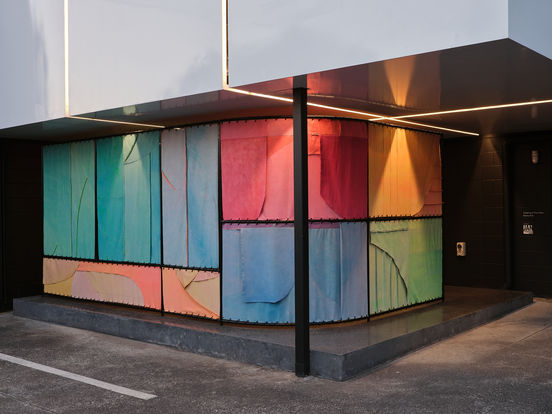
Emma Fitts, Lapping at Your Door, 2022.
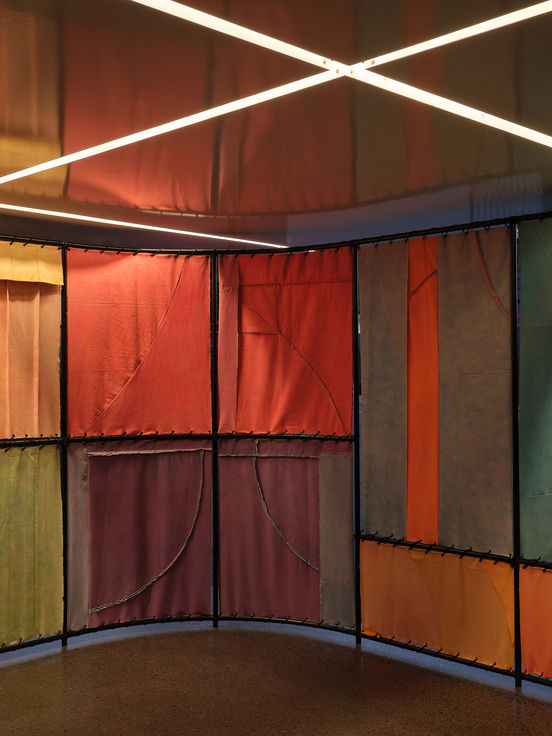
Emma Fitts, Lapping at Your Door, 2022.
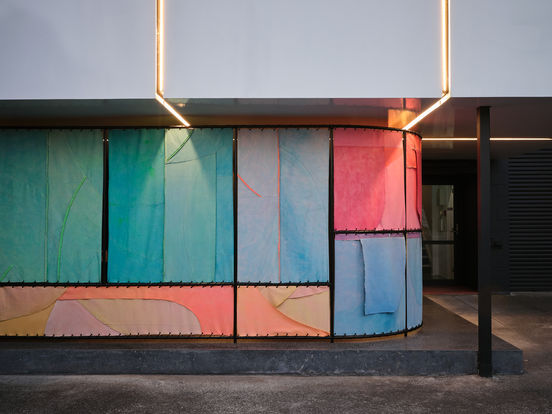
Emma Fitts, Lapping at Your Door, 2022.
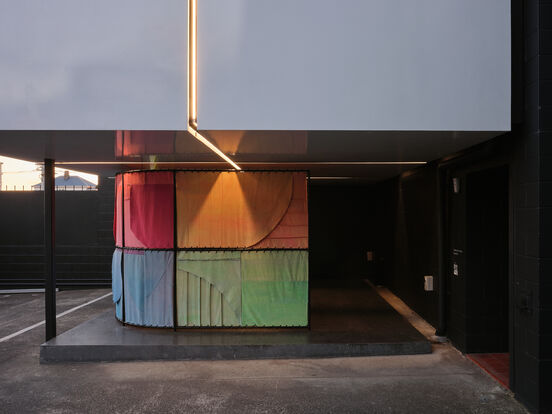
Emma Fitts, Lapping at Your Door, 2022.
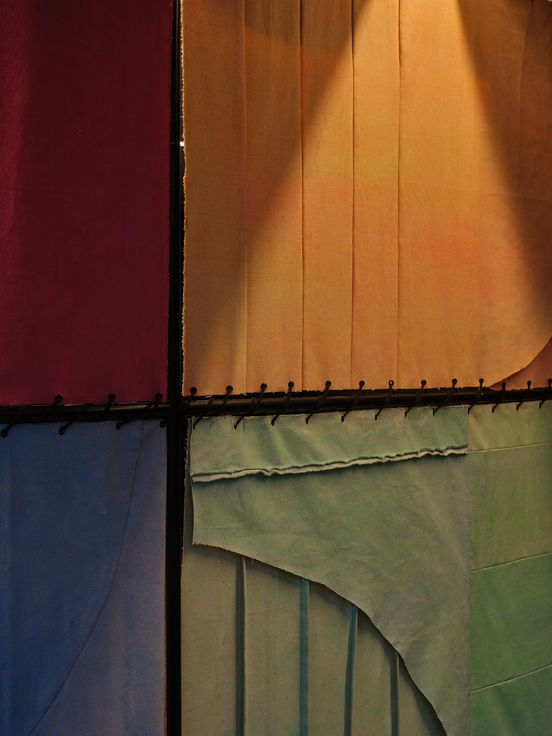
Emma Fitts, Lapping at Your Door (detail), 2022.
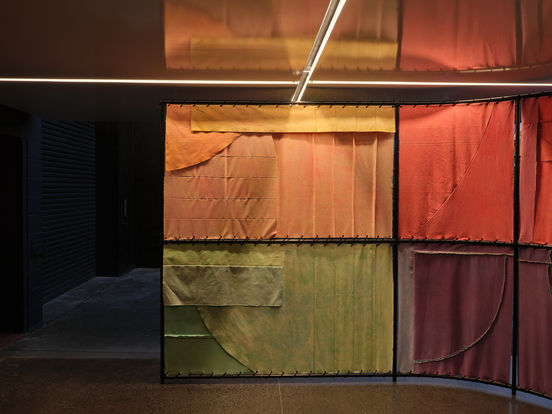
Emma Fitts, Lapping at Your Door, 2022.
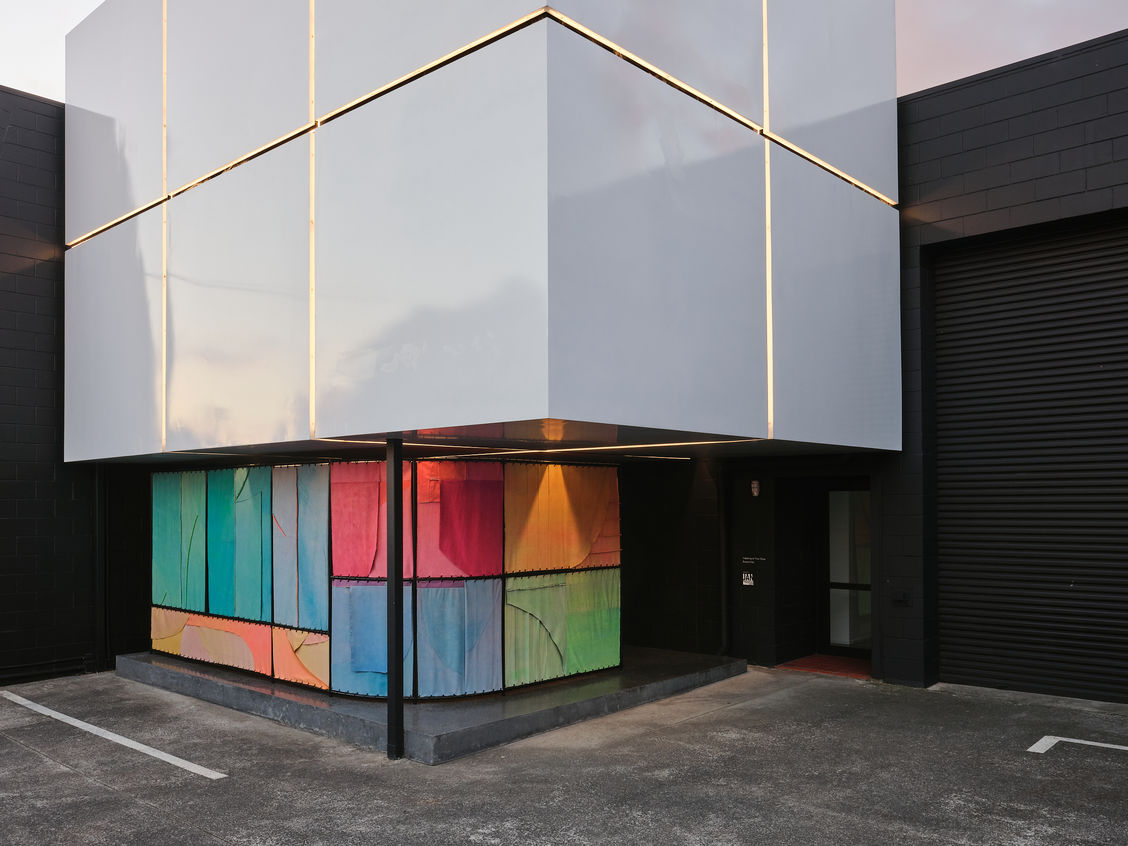
Emma Fitts, Lapping at Your Door, 2022. Photographs by Sam Hartnett.